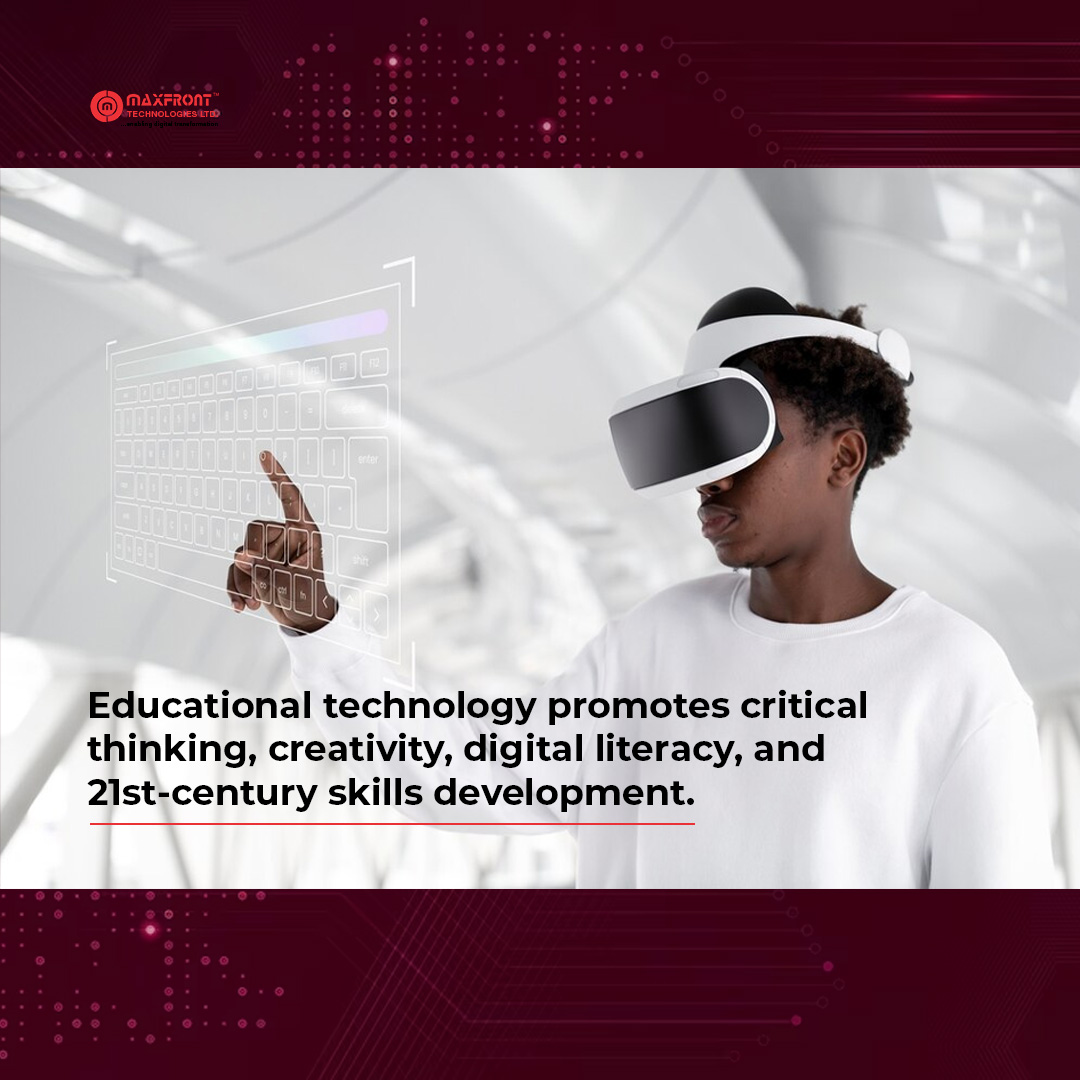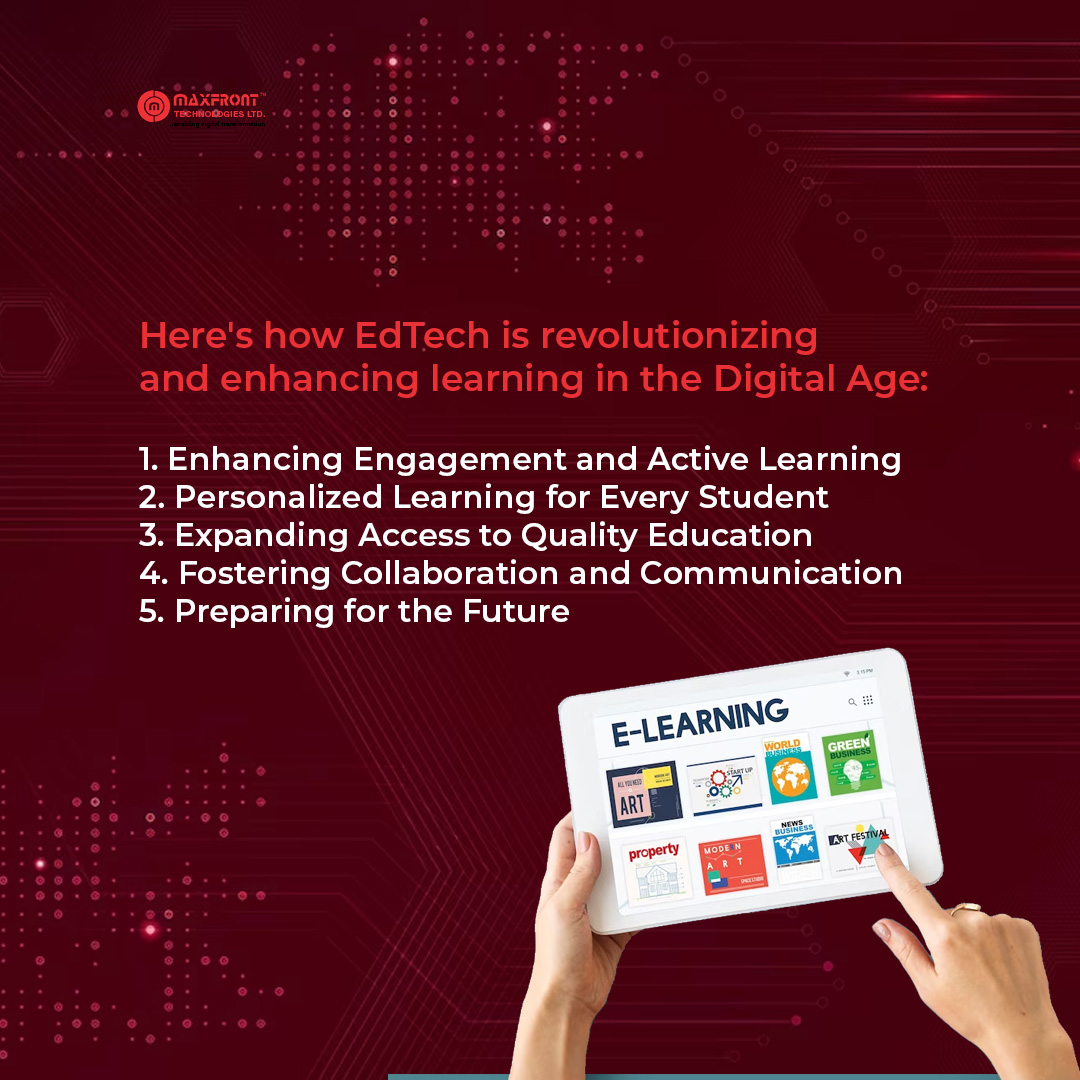
In today’s digital age, educational technology has emerged as a transformative force in classrooms and learning environments. With the ever-evolving technological advancements, educators have an incredible opportunity to harness its power to create engaging, interactive, and personalized student learning experiences.
Educational technology, often called EdTech, uses technology and digital tools to improve teaching and learning; it integrates hardware, software, and online resources to improve student engagement, personalized learning, and instructional outcomes. Tools like LMS, interactive whiteboards, educational apps, and digital assessment tools are used in traditional and remote learning environments.
Educational technology promotes critical thinking, creativity, digital literacy, and 21st-century skills development. As new technologies emerge, it transforms education, making it more engaging, accessible, and effective in preparing students for the digital age. In this blog post, we will explore the vast potential of educational technology and how it is revolutionizing education.
Here’s how EdTech is revolutionizing and enhancing learning in the Digital Age:

- Enhancing Engagement and Active Learning:
Educational technology brings a new level of interactivity and engagement to the learning process. Through multimedia presentations, educational apps, and gamified learning platforms, students are immersed in dynamic, interactive content that captivates their attention. This approach promotes active learning, as students can explore, experiment, and collaborate with their peers, fostering a deeper understanding of the subject matter.
- Personalized Learning for Every Student:
One of the greatest strengths of educational technology lies in its ability to personalize learning experiences. Adaptive learning systems, intelligent tutoring systems, and learning analytics enable educators to tailor instruction to individual student needs. By leveraging data and analytics, educators can identify areas of strength and weakness, provide targeted interventions, and offer personalized feedback, empowering students to learn at their own pace and achieve their full potential.
- Expanding Access to Quality Education:
Technology can bridge the gap between traditional classroom settings and remote or underserved areas. Online learning platforms, virtual classrooms, and distance learning programs offer opportunities for students to access high-quality education, irrespective of geographical limitations. Educational technology also provides inclusive learning environments for students with diverse learning styles, abilities, or special needs, ensuring equal access to education for all.
- Fostering Collaboration and Communication:
Collaboration is essential for success in the modern world, and educational technology facilitates collaborative learning experiences. Through online discussion forums, video conferencing tools, and shared project management platforms, students can collaborate with their peers and connect with experts from around the globe. These collaborative opportunities nurture teamwork, critical thinking, and effective communication skills, preparing students for the collaborative nature of the workplace.
- Preparing for the Future:
As we enter the digital age, equipping students with the skills they need to thrive in an ever-evolving workforce is crucial. Educational technology is pivotal in developing future-ready skills such as digital literacy, coding, data analysis, and problem-solving. By integrating technology into the curriculum, educators ensure that students are well-prepared for the challenges and opportunities of the 21st century.
- Personal and Professional Development:
Educational technology offers a range of opportunities for personal and professional growth. Online courses, webinars, and virtual workshops enable educators and students to continuously update their knowledge and skills, keeping pace with rapidly evolving fields and emerging technologies.
- Data-Driven Decision Making:
Educational technology provides valuable insights through data analytics. Educators can gather and analyze student data to identify areas of improvement, track progress, and make data-driven decisions to enhance instructional practices, curriculum development, and student outcomes.
- Efficiency and Organization:
Educational technology streamlines administrative tasks and enhances overall efficiency in educational institutions. Digital platforms for attendance tracking, grading systems, and online learning management systems simplify administrative processes, allowing educators to focus more on teaching and student engagement.
- Innovation and Creativity:
Educational technology encourages innovative teaching approaches and creative expression. Students can utilize multimedia tools, digital storytelling, and creativity-enhancing software to showcase their knowledge and express their ideas dynamically and engagingly.
There are numerous educational technology tools available that can enhance teaching and learning experiences. Here are some examples:
Educational technology tools like Learning Management Systems (LMS), Interactive Whiteboards, Educational Apps, Video Conferencing Tools, Virtual Reality and Augmented Reality (VR) and AR, Digital Assessment Tools, Online Collaborative Tools, Multimedia Creation Tools, Adaptive Learning Platforms, Data Analytics and Learning Analytics Tools help educators enhance teaching and learning experiences.
These tools enable centralized organization, communication, and distribution of course materials, facilitate discussions, and facilitate online classrooms. Additionally, these tools allow students to create multimedia projects, presentations, videos, and digital stories, promoting collaboration and teamwork. These examples represent just a fraction of the educational technology tools available. The selection of tools depends on educators’ and learners’ specific needs, subject areas, and goals. By leveraging these tools effectively, educators can enhance engagement, promote active learning, personalize instruction, and foster 21st-century skills in their students.
Conclusion:
Educational technology has revolutionized education, fostering engagement, personalization, inclusivity, and future-oriented learning. By embracing the potential of educational technology, educators can unleash a wealth of possibilities and reshape the learning experience for students. Together, let us harness the power of technology to cultivate a vibrant and innovative learning environment that equips students to thrive in the digital age. By fully leveraging educational technology, we can empower students to become lifelong learners and future leaders.
In the digital age, educational technology is pivotal in transforming education by enhancing engagement, personalizing learning experiences, expanding access to education, fostering collaboration, cultivating future-ready skills, enabling data-driven decision-making, streamlining efficiency, and driving innovation. By harnessing the power of educational technology, we can forge a dynamic, inclusive, and effective learning environment that equips students with the necessary tools and skills to succeed in the 21st century.
Embrace the power of educational technology and revolutionize how we teach and learn! Let’s create dynamic, inclusive, and future-ready educational environments that empower students to thrive in the digital age. Together, we can unlock the full potential of educational technology and shape the future of education.